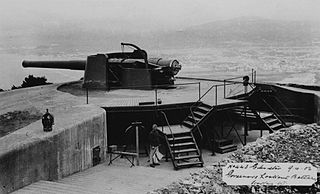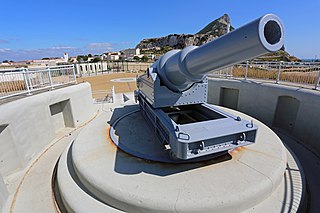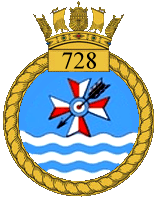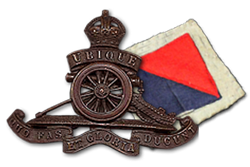
HMS Hesperus was an H-class destroyer that had originally been ordered by the Brazilian Navy with the name Juruena in the late 1930s, but was purchased by the Royal Navy after the beginning of World War II in September 1939, commissioned in 1940 as HMS Hearty and then quickly renamed as Hesperus.

The Atlanta-class cruisers were eight United States Navy light cruisers which were designed as fast scout cruisers, flotilla leaders, or destroyer leaders, but which proved to be effective anti-aircraft cruisers during World War II. They were also known as the Atlanta-Oakland class. The Atlanta class originally had 16 x 5-inch (127 mm)/38 caliber guns in eight two-gun turrets, arranged with three superfiring turrets forward, three more superfiring aft and two waist mounts, one port and one starboard, giving the first four Atlanta-class cruisers the heaviest anti-aircraft armament of any cruiser of World War II. The last four ships of the class, starting with Oakland, had a slightly revised armament with a reduced main gun battery - the waist turrets being deleted - as they were further optimized for anti-aircraft fire in light of war experience.

The BL 7.2-inch howitzer was a heavy artillery piece used by the British Army throughout the Second World War.

Naval Station Argentia is a former base of the United States Navy that operated from 1941 to 1994. It was established in the community of Argentia in the Dominion of Newfoundland, which later became the tenth Canadian province, Newfoundland and Labrador.

The QF 3.7-inch AA was Britain's primary heavy anti-aircraft gun during World War II. It was roughly the equivalent of the German Flak 8.8 cm and American 90 mm, but with a slightly larger calibre of 3.7 inches, approximately 94 mm. Production began in 1937 and it was used throughout World War II in all theatres except the Eastern Front. It remained in use after the war until AA guns were replaced by guided missiles beginning in 1957.

The QF 5.25-inch Mark I gun was the heaviest dual-purpose gun used by the Royal Navy during the Second World War. Although considered less than completely successful, it saw extensive service. 267 guns were built.

Parson's Lodge Battery is a coastal battery and fort in the British Overseas Territory of Gibraltar.

Princess Anne's Battery is an artillery battery in the British Overseas Territory of Gibraltar. It is located on Willis's Plateau at the northern end of the Upper Rock Nature Reserve, below Princess Caroline's Battery. It was named after Anne, Princess Royal and Princess of Orange, the eldest daughter of George II. However, its name is often confused with those of other batteries in the area. In 1732, guns were first mounted on the battery, which also saw action during the Great Siege of Gibraltar. Princess Anne's Battery was updated in the nineteenth and twentieth centuries, with the latter modernisation entailing the installation of four QF 5.25 inch guns with both anti-aircraft and coastal defence capabilities. The battery was manned into the early 1980s, after which it was decommissioned. The guns were refurbished in the early twenty-first century, and represent the world's only intact battery of 5.25 inch anti-aircraft guns. Princess Anne's and Amelia’s Battery are listed with the Gibraltar Heritage Trust.

Middle Hill Battery is an artillery battery in the British Overseas Territory of Gibraltar. It is located on Middle Hill, at the northeastern end of the Upper Rock Nature Reserve, just south of Green's Lodge Battery and Rock Gun Battery. The emplacement dates to 1727, when a single gun was mounted. By the turn of the twentieth century, six 10-inch rifled muzzle-loading guns were present at Middle Hill Battery. Other buildings documented at that time as part of the battery complex included the Nursery Hut and the Middle Hill Group, the latter a cluster of buildings which perched on the cliff edge. An anti-aircraft Bofors gun had been installed at the battery by the Second World War. After the war, the area transitioned to use as a Ministry of Defence aerial farm. In 2005, the battery and surrounding area were transferred to the Government of Gibraltar. The site is now managed by the Gibraltar Ornithological and Natural History Society.
West Battery is an artillery battery in the British Overseas Territory of Gibraltar. It is situated on the escarpment of Windmill Hill in the south of the territory.

Governor's Lookout Battery is one of the many artillery batteries in the British Overseas Territory of Gibraltar, which served to protect it against its many sieges. It is located off Signal Station Road within the Upper Rock Nature Reserve.

Harding's Battery is a restored artillery battery in the British Overseas Territory of Gibraltar. It is located at Europa Point and includes the Europa Sunken Magazine that is now used as a visitor centre.

885 Naval Air Squadron was a Naval Air Squadron of the Royal Navy's Fleet Air Arm. First formed on 1 March 1941, the squadron served as a fighter squadron during the Second World War. It operated in the Mediterranean in 1942–43, where it took part in Operation Torch, the Anglo-American invasion of French North Africa, the Allied invasion of Sicily and the Allied invasion of Italy. In 1944 it took part in the Allied invasion of Normandy, spotting for Allied artillery bombardments and in 1945, was deployed as part of the British Pacific Fleet. It was abolished for the last time on 27 September 1945.

728 Naval Air Squadron was a Fleet Air Arm (FAA) naval air squadron of the United Kingdom’s Royal Navy (RN). It was formed at the beginning of May in 1943, as a Fleet Requirements Unit, at RN Air Section Gibraltar. It provided detachments at RN Air Section Tafaraoui, in Algeria and later at RAF Oujda in Morocco. Moving to HMS Grebe, RNAS Dekheila, in Egypt, during June, it then merged into 775 Naval Air Squadron during July. It reformed in August, again as a Fleet Requirements Unit, at HMS Grebe, moving immediately to RN Air Section Takali, Malta. It provided target towing both for the Royal Navy's Mediterranean Fleet and the British Army, before later providing a detachment to tow targets for the United States Navy at Naples, Italy. The squadron remained on Malta, alternating between the airbases at Ta Kali, Luqa and Hal Far, until disbanding at the latter, in May 1967.

7th Heavy Anti-Aircraft Regiment, Royal Artillery was an air defence unit of the British Army that served in the Siege of Malta during World War II. It fired the first British shots in the Mediterranean Theatre in the war, and provided the basis on which the heavy anti-aircraft defences of Malta were built. Late in the war it returned to defend the UK against V-1 flying bombs, and continued in the postwar army until 1954.

10th Heavy Anti-Aircraft Regiment, Royal Artillery was an air defence unit of the British Army that served in the Mediterranean Theatre during World War II. Having been formed in Gibraltar early in the war, it moved to Malta where it defended the island during the Siege of 1940–43.

82nd (Essex) Heavy Anti-Aircraft Regiment, Royal Artillery, was a volunteer air defence unit of Britain's Territorial Army (TA) from 1938 until 1955. During World War II it served in the Norwegian Campaign, defended Gibraltar and the D-Day invasion ports, and took part in Operation Diver against the V-1 flying bombs.

228th (Edinburgh) Heavy Anti-Aircraft Battery, Royal Artillery was a Scottish air defence unit of Britain's Territorial Army (TA) formed around Edinburgh during the period of international tension leading up to the outbreak of World War II. It defended Eastern Scotland during the early part of the war and then served in the defence of Gibraltar. Its successor unit served in the postwar TA as air defence artillery and as engineers until 1999.

191st Heavy Anti-Aircraft Battery, Royal Artillery, was an air defence unit of Britain's Territorial Army formed in Birmingham before World War II. It defended the West Midlands against attack during the Battle of Britain, and was then shipped to Malta, where it served through most of the long siege when the island fortress was bombed incessantly.

15th Anti-Aircraft Brigade was an air defence formation of the Royal Artillery which saw service during the middle years of the Second World War. The brigade was formed in Gibraltar to control those anti-aircraft (AA) units based there and disbanded shortly after the air threat had been diminished in 1944. The brigade was later reformed in 1947 as part of the post-war regular army, but disbanded in 1957 following the end of the AA era.
















